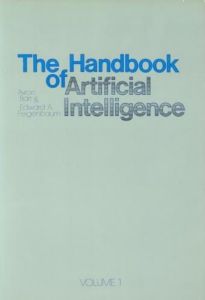This is the first volume of a 3-volume set published in the early 1980's and thus could be thought of as a summary of what was known at the time in the field of artificial intelligence (A.I.). Now sometimes referred to as "GOFAI" for "good ole-fashioned artificial intelligence", this set of books can still be referred to profitably by anyone curious about the applications of artificial intelligence. Indeed, many of the algorithms discussed in this volume are still being used, and very robustly, in current implementations of artificial intelligence. A lot has happened since this volume was published, especially in the area of chess playing and logic programming, but there are many sections of the book that are still up-to-date.
After a brief introduction to A.I. in chapter one, chapter two overviews the use of search algorithms for intelligent problem solving. The emphasis initially is on the problem representations that form the basis of search techniques, such as state-space and problem-reduction representations. Game tree representations are also discussed. The algorithms that implement the problem representations are then treated. If the search space is viewed merely syntactically, these are called "blind search" algorithms, which are distinguished from "heuristic" methods, which exploit various structural information about the problem in order to limit the search. Examples of blind search methods that are discussed include breadth-first, uniform-cost, depth-first, and bidirectional search. Examples of heuristic methods discussed are ordered state-space, bidirectional, and the famous A*-algorithm, the latter of which is still finding considerable use in new applications of A.I. Examples of game tree search that are covered include the minimax procedure, the negmax formalism, and alpha-beta pruning. There is discussion on the use of heuristics in game tree search, but this part is out-of-date due to the advances made in chess playing, checkers, etc, since this volume was published.
Chapter three is an overview of knowledge representation in A.I. The author takes a pragmatic approach to the nature of knowledge and intelligence, and defines the "representation of knowledge" as a combination of data structures and interpretive procedures that will lead to what he calls "knowledgeable" behavior. A book needs a reader before it could be considered knowledge, argues the author. He calls this whole enterprise "experimental epistemology" , which endeavors to create programs that exhibit intelligent behavior. The chapter gives an overview of the knowledge representation schemes used in A.I. and discusses their uses and shortcomings. Also, the tension between the advocates of declarative versus procedural knowledge representations is discussed. Declarative systems are more logical/mathematically based, and were exemplified by theorem-provers based on logical resolution. The procedural approach emphasized a more directed approach to the problem of inference and one that makes the reasoning process more understandable. There is a brief discussion on semantic nets, which were invented as a model of human associative memory. The net consists of nodes, which represent concepts, objects, or events, and links between the nodes. The relevant facts about a concept can be inferred from the nodes to which they are linked directly, and so an extensive database search is not necessary. The semantics of net structures depends only on the program that uses them, and so any notion of "logical validity" of inferences from using the net is absent. Production systems are also discussed in this chapter, these being developed as models of human cognition. These systems are called "modular" knowledge representation schemes in that the database consists of rules, or "productions", that take the form of condition-action pairs. The conditions in which each rule is applicable are made explicit and thus the interactions between the rules are minimized. These systems have been used to control the interaction between declarative and procedural statements and to develop autonomous learning systems. In addition, the chapter includes a discussion of the "frame" knowledge representation system, which at the time of publication, was just getting started in A.I. research. It has been widely discussed since then, mostly in the context of studying how to implement reasoning about actions, and became to be known as the "frame problem". The proliferation of the frame axioms needed made reasoning about actions difficult or cumbersome, but was later solved using what are now called "successor-state axioms". The chapter also includes a discussion of the standard logical representational schemes: propositional and first-order predicate logic. Since the time of publication, and due to the interest in developing "common-sense" reasoning machines, second-order predicate logic has made its appearance in A.I. research, sometimes being called "ontological engineering" in the literature. Also, due to the time of publication, there is no discussion of inductive logic programming, which has recently gained importance in A.I. research and its applications.
Chapter four covers the very important topic of natural language understanding. This is one of the areas in A.I. that has been the target of an enormous amount of research, for the ability of a computer to converse with a human fluently and with understanding would be a major advance for A.I., perhaps even an "acid test" that true intelligence has finally been achieved in a machine. The chapter gives a brief history of research in natural language processing and discusses the early attempts at machine translation from one language to another. There is also extensive discussion on grammars, parsing techniques, and text generation. Several examples of programs used for natural language processing that were popular at the time of publication are discussed.
In Collection
#5666
Read It:
Yes
#5666
Read It:
Yes
|
|
||||||||||||||
